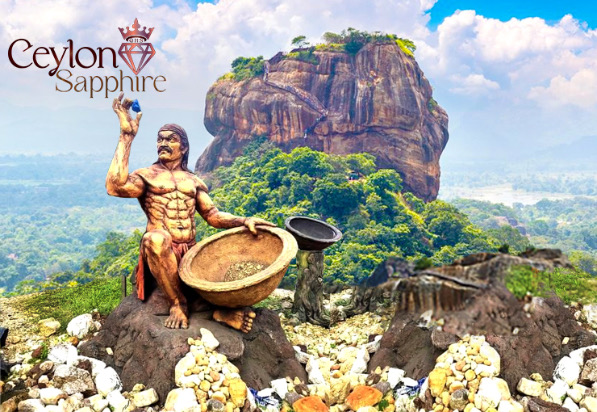
Sri Lanka is the world’s oldest known source for the best quality sapphires and gemstones. The geology of the country’s valleys has created the conditions to create a bounty of precious stones in the country’s gem bearing district. Ceylon or Sri Lanka is called “Rathna Deepa” in the native language and it means “Land of Gems”. The name is a reflection of its natural wealth. Sri Lanka’s gem industry has a very long and colorful history. It has been estimated that nearly 25% of the total area of Sri Lanka is potentially gem-bearing, making Sri Lanka one of the country’s richest in gems having the highest density of gem deposits compared to its landmass. This also highlights the importance of Ceylon for the international gemstone trade and local gemstone industry.
Ceylon is not just the oldest source of sapphire, with continuous production over 2000 years, but also have produced most of the large fine sapphires ever seen, with top stones ranging up to 500+ carats. As with Mogok stones, rutile silk are often present, resulting in star sapphires. Indeed, Sri Lanka and Burma are the only sources of high-quality star sapphires.
Sri Lankan blues tend to be a bit lighter and brighter in color than their Burmese brethren, but there is still much overlap between the sources. In many cases, labs cannot accurately separate blue sapphires from Sri Lanka and Burma. Additionally, it is extremely difficult to separate some Sri Lankan stones from those of Kashmir and Madagascar. Top Sri Lankan blues are often compared to the color of the neck or tail feather of the peacock and are known in the trade as "peacock blues." They have what we call "snap," a slightly electric appearance (think cobalt blue spinel here). Medium to light colors are often termed "cornflower" blues, due to their resemblance to that flower. Many Ceylon sapphires are heat treated, but the trend today is definitely towards completely natural stones.